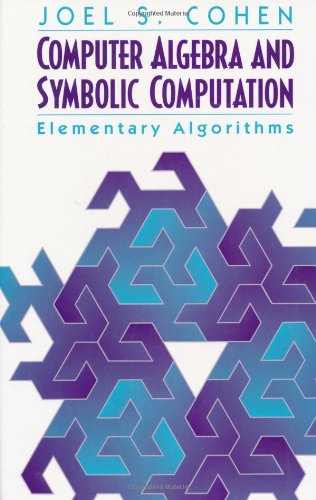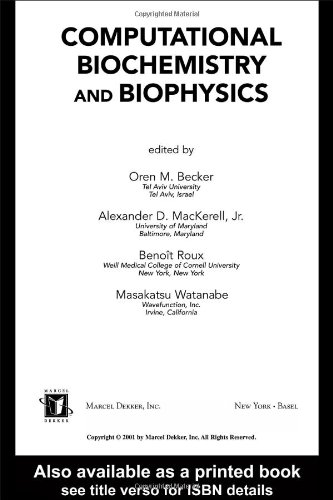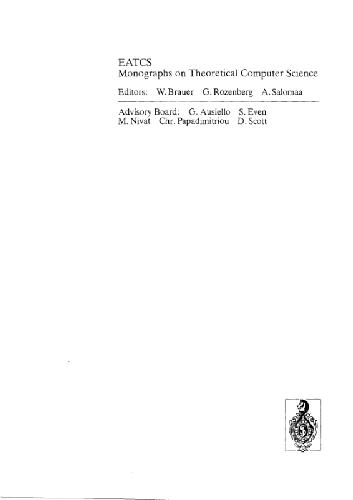Paul Harrison9780470010792, 9780470010808, 9780470010815, 0470010797, 0470010800
Table of contents :
Contents……Page 9
Preface……Page 17
Acknowledgements……Page 21
About the author……Page 23
About the book……Page 25
Introduction……Page 27
1.1 The mechanics of waves……Page 29
1.2 Crystal structure……Page 32
1.3 The effective mass approximation……Page 34
1.4 Band theory……Page 35
1.5 Heterojunctions……Page 36
1.6 Heterostructures……Page 37
1.7 The envelope function approximation……Page 39
1.8 The reciprocal lattice……Page 40
2.1 The infinite well……Page 45
2.2 In-plane dispersion……Page 49
2.3 Density of states……Page 51
2.4 Subband populations……Page 54
2.5 Finite well with constant mass……Page 59
2.6 Effective mass mismatch at heterojunctions……Page 64
2.7 The infinite barrier height and mass limits……Page 66
2.8 Hermiticity and the kinetic energy operator……Page 68
2.9 Alternative kinetic energy operators……Page 70
2.10 Extension to multiple-well systems……Page 72
2.11 The asymmetric single quantum well……Page 75
2.12 Addition of an electric field……Page 76
2.13 The infinite superlattice……Page 79
2.14 The single barrier……Page 86
2.15 The double barrier……Page 88
2.17 Magnetic fields and Landau quantisation……Page 96
2.18 In summary……Page 99
3.1 Shooting method……Page 101
3.2 Generalised initial conditions……Page 104
3.3 Practical implementation of the shooting method……Page 107
3.4 Heterojunction boundary conditions……Page 110
3.5 The parabolic potential well……Page 111
3.6 The Pöschl–Teller potential hole……Page 115
3.7 Convergence tests……Page 116
3.8 Extension to variable effective mass……Page 117
3.9 The double quantum well……Page 121
3.10 Multiple quantum wells and finite superlattices……Page 123
3.12 Quantum confined Stark effect……Page 125
3.13 Field–induced anti-crossings……Page 126
3.14 Symmetry and selection rules……Page 127
3.15 The Heisenberg uncertainty principle……Page 129
3.16 Extension to include band non-parabolicity……Page 131
3.17 Poisson’s equation……Page 135
3.18 Self-consistent Schrödinger–Poisson solution……Page 140
3.19 Computational implementation……Page 142
3.20 Modulation doping……Page 143
3.21 The high-electron-mobility transistor……Page 144
3.22 Band filling……Page 145
4.1 Introduction……Page 147
4.2 Theory……Page 149
4.4 Convergence tests……Page 152
4.5 Constant diffusion coefficients……Page 154
4.6 Concentration dependent diffusion coefficient……Page 156
4.7 Depth dependent diffusion coefficient……Page 157
4.8 Time dependent diffusion coefficient……Page 160
4.9 δ-doped quantum wells……Page 161
4.10 Extension to higher dimensions……Page 164
5.1 Donors and acceptors in bulk material……Page 165
5.2 Binding energy in a heterostructure……Page 168
5.3 Two-dimensional trial wave function……Page 174
5.4 Three-dimensional trial wave function……Page 181
5.5 Variable-symmetry trial wave function……Page 188
5.6 Inclusion of a central cell correction……Page 195
5.7 Special considerations for acceptors……Page 196
5.8 Effective mass and dielectric mismatch……Page 197
5.10 Excited states……Page 198
5.11.1 Diluted magnetic semiconductors……Page 199
5.11.2 Spin-flip Raman spectroscopy……Page 201
5.12 Alternative approach to excited impurity states……Page 204
5.13 The ground state……Page 205
5.14 Position dependence……Page 207
5.15 Excited States……Page 208
5.16 Impurity occupancy statistics……Page 212
6.1 Excitons in bulk……Page 217
6.2 Excitons in heterostructures……Page 219
6.3 Exciton binding energies……Page 220
6.4 1s exciton……Page 225
6.5 The two-dimensional and three-dimensional limits……Page 230
6.6 Excitons in single quantum wells……Page 235
6.7 Excitons in multiple quantum wells……Page 238
6.8 Stark Ladders……Page 240
6.9 Self-consistent effects……Page 242
6.10 Spontaneous symmetry breaking……Page 243
6.11 2s exciton……Page 245
7.1 Stress and strain in bulk crystals……Page 247
7.2 Strain in quantum wells……Page 252
7.3 Strain balancing……Page 255
7.4 Effect on the band profile of quantum wells……Page 258
7.5 The piezoelectric effect……Page 261
7.6 Induced piezoelectric fields in quantum wells……Page 264
7.7 Effect of piezoelectric fields on quantum wells……Page 267
8.1 Further confinement……Page 271
8.2 Schrödinger’s equation in quantum wires……Page 274
8.3 Infinitely deep rectangular wires……Page 276
8.4 Simple approximation to a finite rectangular wire……Page 279
8.5 Circular cross-section wire……Page 283
8.6 Quantum boxes……Page 287
8.7 Spherical quantum dots……Page 288
8.8 Non-zero angular momentum states……Page 291
8.9 Approaches to pyramidal dots……Page 292
8.10 Matrix approaches……Page 293
8.11 Finite difference expansions……Page 294
8.12 Density of states……Page 295
9.1 Fermi’s Golden Rule……Page 299
9.2 Phonons……Page 300
9.3 Longitudinal optic phonon scattering of bulk carriers……Page 303
9.4 LO phonon scattering of two-dimensional carriers……Page 311
9.5 Application to conduction subbands……Page 324
9.6 Averaging over carrier distributions……Page 326
9.7 Ratio of emission to absorption……Page 329
9.8 Screening of the LO phonon interaction……Page 330
9.9 Acoustic deformation potential scattering……Page 331
9.10 Application to conduction subbands……Page 337
9.11 Optical deformation potential scattering……Page 338
9.12 Confined and interface phonon modes……Page 341
9.13 Carrier–carrier scattering……Page 342
9.14 Addition of screening……Page 350
9.15 Averaging over an initial state population……Page 352
9.16 Intrasubband versus intersubband……Page 354
9.17 Thermalised distributions……Page 356
9.18 Auger-type intersubband processes……Page 357
9.19 Asymmetric intrasubband processes……Page 358
9.20 Empirical relationships……Page 359
9.21 Carrier–photon scattering……Page 360
9.22 Quantum cascade lasers……Page 366
9.23 Carrier scattering in quantum wires and dots……Page 370
10.1 Symmetry, basis states and band structure……Page 373
10.2 Valence band structure and the 6 × 6 Hamiltonian……Page 375
10.3 4 × 4 valence band Hamiltonian……Page 378
10.4 Complex band structure……Page 380
10.5 Block-diagonalisation of the Hamiltonian……Page 381
10.6 The valence band in strained cubic semiconductors……Page 383
10.7 Hole subbands in heterostructures……Page 385
10.8 Valence band offset……Page 387
10.9 The layer (transfer matrix) method……Page 389
10.10 Quantum well subbands……Page 393
10.11 The influence of strain……Page 395
10.13 Direct numerical methods……Page 396
11.1 Principles and Approximations……Page 399
11.2 Elemental Band Structure Calculation……Page 401
11.3 Spin–orbit coupling……Page 409
11.4 Compound Semiconductors……Page 411
11.5 Charge densities……Page 414
11.7 Alloys……Page 418
11.8 Atomic form factors……Page 420
11.9 Generalisation to a large basis……Page 421
11.10 Spin–orbit coupling within the large basis approach……Page 424
11.11 Computational implementation……Page 426
11.12 Deducing the parameters and application……Page 427
11.13 Isoelectronic impurities in bulk……Page 430
11.14 The electronic structure around point defects……Page 434
12.1 The superlattice unit cell……Page 439
12.2 Application of large basis method to superlattices……Page 443
12.3 Comparison with envelope–function approximation……Page 447
12.4 In-plane dispersion……Page 449
12.6 Strain-layered superlattices……Page 450
12.7 The superlattice as a perturbation……Page 453
12.8 Application to GaAs/AlAs superlattices……Page 458
12.9 Inclusion of remote bands……Page 460
12.11 Computational effort……Page 461
12.12 Superlattice dispersion and the interminiband laser……Page 463
12.13 Addition of electric field……Page 464
13.1 Recent progress……Page 471
13.2 The quantum-wire unit cell……Page 472
13.4 V-grooved quantum wires……Page 475
13.5 Along-axis dispersion……Page 476
13.6 Tiny quantum dots……Page 477
13.7 Pyramidal quantum dots……Page 479
13.8 Transport through dot arrays……Page 482
13.9 Anti-wires and anti-dots……Page 484
Concluding Remarks……Page 485
Appendix A: Materials parameters……Page 487
References……Page 489
B……Page 505
E……Page 506
M……Page 507
R……Page 508
W……Page 509
Z……Page 510







Reviews
There are no reviews yet.